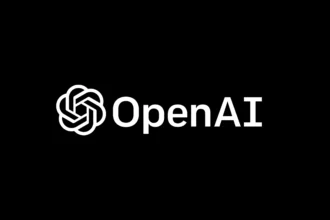Table of Contents
ToggleWhere Are ChatGPT Servers Located?
ChatGPT servers are primarily located within the United States, hosted mainly on Microsoft Azure data centers distributed across several key states. While exact server addresses are not publicly disclosed, the general geographic footprint and hosting infrastructure details provide insight into ChatGPT’s server positioning.
Geographic Location of ChatGPT Servers
OpenAI’s ChatGPT infrastructure is concentrated in the US. Several major data centers contribute to hosting ChatGPT on Microsoft Azure’s platform, including:
- Northern Virginia (Ashburn and surrounding areas)
- Texas (notably San Antonio and Dallas/Fort Worth)
- California (San Jose and San Francisco Bay Area)
- Washington State (Quincy and Redmond)
These locations form the backbone of ChatGPT’s hosting, offering distributed yet US-centric data center deployment. Although Microsoft Azure is a global cloud platform, OpenAI’s use of its US-based facilities ensures ChatGPT and related AI services operate primarily within the United States.
Hosting Platforms and Infrastructure
ChatGPT runs on cloud infrastructure, with Microsoft Azure being the most likely primary hosting provider. This alignment stems from OpenAI’s collaboration with Microsoft.
- OpenAI blends proprietary infrastructure with cloud services.
- Microsoft Azure offers scalable and reliable resources specialized in AI and machine learning.
- Cloud hosting allows OpenAI to manage growing demand efficiently.
While Microsoft Azure stands out as the most probable host platform given strategic partners, other cloud providers like AWS or Google Cloud Platform cannot be ruled out entirely since OpenAI has not officially revealed the full hosting composition. The service routes user requests dynamically to available servers within this infrastructure.
Server Routing and User Connection
End users connect to whichever Azure data center their request is routed to. This dynamic routing aims to balance load and optimize performance globally, but physical server locations remain within the US.
Because OpenAI has not published exact server locations, it is impossible for users to know precisely which data center handles individual API calls or interactions with ChatGPT.
Latency Considerations and Optimization
The physical distance to a ChatGPT server has minimal effect on total response latency. The largest part of delay arises from the model’s processing time (“time to first token”) rather than the network transmission latency.
- Latency differences between nearest and farthest US servers rarely exceed 100 milliseconds.
- Reducing the route by miles generally yields negligible latency improvements.
- Hosting client applications on Azure can marginally optimize latency but often yields minor practical gains.
Practical Advice for Developers
Developers concerned about latency may consider hosting their applications on Microsoft Azure, positioning API calls closer to OpenAI’s servers. However, the performance gain is limited and usually unnecessary unless operating a latency-critical application.
Since exact server locations are undisclosed, optimization typically focuses on logical proximity to major Azure data centers in Virginia, Texas, California, or Washington.
Key Takeaways
- ChatGPT servers are based primarily in US Microsoft Azure data centers, across Virginia, Texas, California, and Washington.
- OpenAI uses a mix of cloud infrastructure with Microsoft Azure as the strongest hosting candidate.
- Exact server locations are not publicly available, maintaining operational security.
- Latency differences caused by distance to servers remain minor compared to model processing times.
- Hosting applications within Azure can slightly improve latency but rarely makes a significant difference.
Where Are ChatGPT Servers Located? The Mystery Behind the AI Curtain
So, you’re curious: where are ChatGPT servers located? It’s an intriguing question, especially for those tuned into how AI magic happens behind the scenes. The short answer: ChatGPT servers are primarily located in the United States, spread across various Microsoft Azure data centers, yet the exact locations remain a bit of a secret. Let’s dive deeper and unwrap this mystery bit by bit.
First, imagine ChatGPT not as a single clunky machine tucked away in a dusty basement, but as a fleet of powerful servers scattered like hidden treasures in several U.S. regions. That’s essentially what we’re dealing with. These servers work together to process your requests, no matter where you are.
The Geographic Scoop: Distributed but U.S.-Bound
Despite common cloud myths about “multi-continental AI,” OpenAI’s official documents confirm that ChatGPT’s servers are currently located only in the U.S. Specifically, they’re spread out in major data centers across a few standout states:
- Virginia: Northern Virginia, around Ashburn, which is sometimes dubbed “Data Center Alley” due to the sheer number of server farms there.
- Texas: San Antonio and Dallas/Fort Worth—a new favorite for tech infrastructure thanks to its lower power costs and growing network.
- California: The San Francisco Bay Area including San Jose, fittingly close to Silicon Valley’s tech heartbeat.
- Washington State: Quincy and Redmond, known for their cool climate and abundant renewable energy sources, both great for powering data centers.
These geographically distinct spots are no accident; they allow for redundancy, high availability, and, in theory, better latency management—although, as you’ll soon see, latency isn’t the star of this show.
Hosted on Azure: The Cloud Underpinning of ChatGPT
ChatGPT doesn’t live on just any servers—you’ll find it cradled within the cloud infrastructure provided by Microsoft Azure. Why Azure? OpenAI and Microsoft have a known collaboration, making Azure the strongest candidate for hosting these powerful AI workloads.
Azure offers a scalable and reliable platform to meet OpenAI’s growing demands. While one might imagine OpenAI spreading its AI wings across Amazon Web Services or Google Cloud Platform too, no direct evidence supports that. It’s Azure all the way for now.
As a user, you don’t get to pick which data center you connect to. Instead, Azure’s network routes your requests to the “closest” or most available server automatically. Sadly, there’s no dashboard that says, “You’re talking to the Ashburn server today!”
Latency: The Great Leveler
You might wonder, “Does being in New York versus California change my ChatGPT experience?” Great question. But the answer will likely be a shrug accompanied by “Not really.”
Latency here is nuanced. The network delay between you and the servers—whether you’re 1 mile or 100 miles from the data center—barely registers in most ChatGPT sessions. Why? Because the model’s processing time dwarfs network latencies. Running deep learning computations to generate a response is computationally heavy, often taking much longer than data transmission across the internet.
- In practice, the latency difference between the nearest and furthest server is under 100 milliseconds.
- The largest latency you notice comes from the time to generate the first response token, not the network ping.
- Even hosting your app alongside ChatGPT servers probably won’t speed things up enough to matter for most users.
No need to be a tech wizard here: unless you run a mission-critical, high-frequency trading AI that demands microsecond responses, worrying about your server’s proximity to the ChatGPT data center may be a fun thought exercise rather than a practical necessity.
Glitches in the Matrix: Why You Can’t Spot the Exact Server
Here’s the deal—OpenAI keeps the precise server locations under wraps. Whether that’s for security, privacy, or just good old-fashioned corporate intrigue, no one outside OpenAI’s inner circle can say exactly which racks of hardware are spinning ChatGPT’s responses.
Even if you tried to track down the server location by pinging or tracing routes (let’s be honest, who hasn’t tried?), Azure’s routing and multiple layers of network infrastructure obscure the path. Think of it like calling a big corporation; you get routed through various call centers before reaching the right person—except here, the “person” is your AI assistant.
Practical Tips if Latency Is Your Concern
Developers and businesses who want to improve the latency of apps using the ChatGPT API might think, “Should I host my application close to the ChatGPT servers?” The intuitive answer is yes, but practically speaking, the difference isn’t huge.
If reducing latency is truly crucial, then hosting your application on Azure near one of the major U.S. data centers (Virginia, Texas, California, or Washington) is a reasonable approach. This strategy simplifies routing and might shave off a tiny fraction of waiting time.
But here’s the kicker: OpenAI’s own docs and community insights suggest these gains are minor compared to the total latency involved in generating responses. Your time is usually better spent optimizing your app’s logic or adding caching layers rather than chasing milliseconds by geographical proximity.
Behind the Scenes: What Makes ChatGPT Servers Special?
These aren’t your average web servers. ChatGPT runs on high-powered virtual machines tailored to handle deep learning tasks. Such hardware demands substantial RAM, GPUs, and fast storage to manage massive neural networks like GPT-4.
Operating systems like Linux and Ubuntu often run under the hood in these environments, providing the solid backbone for AI. The cloud setup allows OpenAI to flexibly scale servers up or down depending on demand, ensuring most users get a smooth experience.
Cloud hosting also means OpenAI doesn’t need to sweat hardware failures as much; data replication and failover strategies kick in behind the scenes to keep the chatbot chugging along.
So, Where Should You Imagine ChatGPT’s AI Brain Lives?
“Picture ChatGPT’s processing power humming quietly in big data halls across the American landscape—from the tech buzz of Silicon Valley to the sprawling plains of Texas and the tech hub of Northern Virginia. It’s there, humming with efficiency, serving billions of tokens daily.”
This image reflects the reality: a distributed yet concentrated network of hardware making real-time AI conversations possible. It’s a global curiosity with a decidedly American heart for now.
Wrapping It Up: The Real Story Behind ChatGPT’s Location
In essence, ChatGPT servers are:
- Primarily located in the U.S., stamped across prominent Microsoft Azure data centers in Virginia, Texas, California, and Washington.
- Hosted on Microsoft Azure’s cloud for scalability and reliability.
- Hidden behind layers of networking abstraction, making exact server locations unknowable to the public.
- Not subject to meaningful latency differences based on the user’s geographical distance.
OpenAI may evolve and expand hosting in the future, potentially to other continents, but for now, the AI brain you chat with has found a secure home in these US cloud hubs.
Have you ever thought about the invisible digital journey your words take when you ask ChatGPT a question? Now you know a bit more about the stops along the way.
Where do you think the future of AI hosting lies? Will we one day see specialized AI data centers spread evenly across the globe, pushing the boundaries of instant, ultra-low-latency AI responses? Or will the cloud giants keep holding the keys close to home? Food for thought.
Where are ChatGPT servers primarily located?
ChatGPT servers are mainly located in the United States. They are distributed across multiple data centers in Virginia, Texas, California, and Washington State.
Which cloud platform hosts ChatGPT servers?
ChatGPT is hosted on Microsoft Azure. This cloud platform provides scalable infrastructure to run the AI models efficiently.
Can users know the exact location of ChatGPT servers?
The precise server locations are not publicly disclosed by OpenAI. You connect to the Azure server that is routed to you, but exact locations remain unknown.
Does server location significantly affect ChatGPT latency?
Network latency differences between data centers are minimal, usually under 100ms. Most delay comes from processing time, not distance from the server.
How can users reduce latency when accessing ChatGPT?
Hosting your application on Azure may help. Still, being closer to the data center makes little difference since processing time is the main latency factor.





